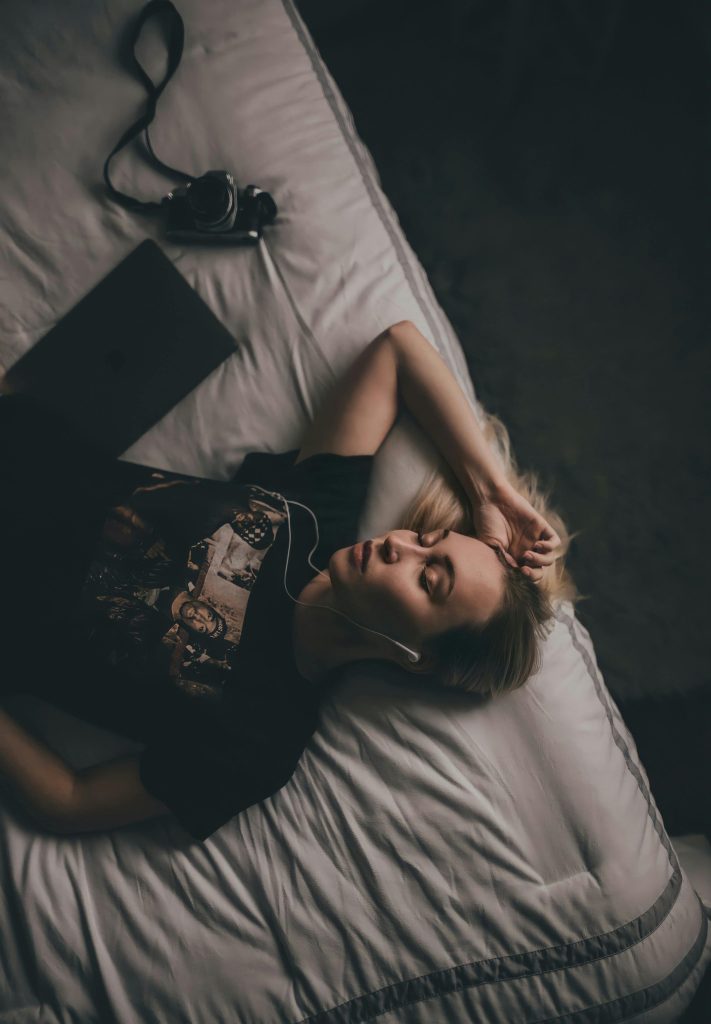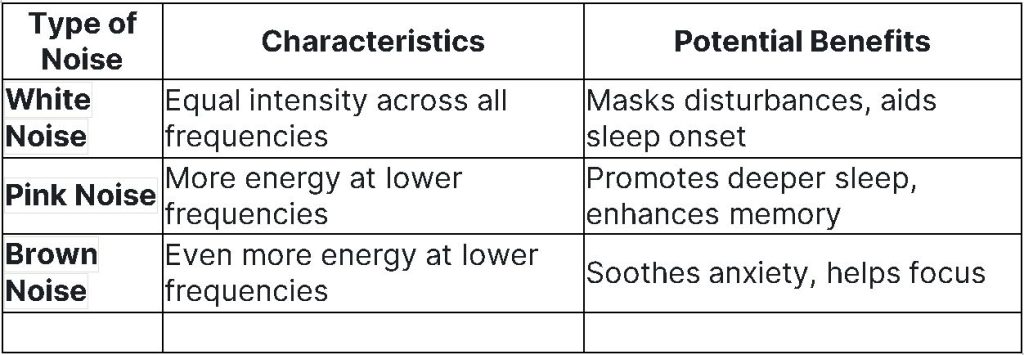
Introduction
In today’s fast-paced world, sleep has become a precious commodity. Many individuals find themselves struggling to achieve a restful night’s sleep due to various disturbances, from environmental noise to personal stressors. This is where white noise comes into play. By understanding white noise and its effects on sleep, we can explore how it may benefit those of us seeking improved sleep quality.
White noise, often described as a consistent sound that masks other noises, has gained popularity as a sleep aid. It provides a soothing background that can help lull the mind into a state conducive to rest. But how exactly does it work, and why is it effective? Through this article, I aim to shed light on these questions and provide a comprehensive guide to help you decide if white noise is right for you.
As we delve deeper, we will explore the science behind white noise, compare it to other types of noise, and examine its potential benefits and downsides. Whether you’re a curious newcomer or an avid user of white noise, this guide will equip you with the knowledge to make informed decisions about incorporating it into your sleep routine.
What is White Noise?
White noise is a type of sound that contains all frequencies audible to the human ear, distributed equally in intensity. This means that it covers the entire spectrum of sound frequencies, creating a uniform auditory experience. Think of it as the sonic equivalent of white light, which contains all colors of the visible spectrum.
To better understand white noise, consider the sound of a television or radio tuned to an unused frequency, producing a steady, unvarying hum. This sound is often described as static and can be quite soothing to the ears, creating a blanket of sound that covers other disruptive noises in the environment.
While the concept of white noise might seem simple, its applications are diverse. It’s used not only for sleep but also in various fields such as sound masking in offices, enhancing concentration, and even in therapeutic settings. Its versatility is one of the reasons it has become a staple in many people’s daily routines.
How White Noise Works
White noise works by masking other sounds that might disturb us. Imagine you’re trying to sleep, but your neighbor’s dog won’t stop barking. By playing white noise, the consistent sound can help drown out the barking, making it less noticeable and allowing you to drift off more easily.
The principle behind this is quite straightforward. Our brains tend to notice sudden changes in sound, which can be disruptive to sleep. A constant, unchanging noise like white noise provides a stable auditory environment that makes sudden sounds less jarring. This, in turn, helps maintain a peaceful state conducive to rest.
Moreover, white noise can help create a routine. By listening to the same sound each night, our brains begin to associate it with sleep, signaling that it’s time to wind down. This conditioning can be particularly helpful for individuals struggling with sleep onset or maintaining a consistent sleep schedule.
The Science Behind White Noise and Sleep
Scientific research supports the use of white noise as a sleep aid. Studies have shown that white noise can reduce the time it takes to fall asleep and improve overall sleep quality. This is largely due to its ability to mask environmental noises and create a consistent soundscape.
One study published in the Journal of Caring Sciences found that white noise improved sleep quality in patients in a coronary care unit, where noise levels are typically high. This suggests that even in noisy environments, white noise can provide a buffer that promotes better rest.
Furthermore, white noise has been found to increase the duration of REM sleep, the restorative phase of the sleep cycle associated with dreaming and memory consolidation. By enhancing REM sleep, white noise may contribute to improved cognitive function and emotional regulation during waking hours.
Benefits of White Noise for Sleep and ADHD
There are numerous advantages to using white noise for sleep. One of the primary benefits is its ability to mask disruptive sounds. Whether it’s traffic, snoring, or a noisy neighborhood, white noise can help create a more serene sleeping environment by blocking out these disturbances.
Additionally, white noise can assist in reducing sleep onset latency—the time it takes to fall asleep. By providing a calming backdrop, it helps quiet the mind and body, easing the transition into sleep. This is particularly beneficial for individuals who find their minds racing at bedtime, preventing them from relaxing and can help people with ADHD. Studies involving children and college-aged individuals with ADHD have shown that exposure to white and pink noise can yield a modest yet statistically significant improvement in task performance. These sound frequencies appear to enhance focus and attention during laboratory-based cognitive tasks, offering measurable benefits for those with ADHD or elevated ADHD symptoms.
Finally, white noise can promote deeper, more restorative sleep. By supporting the natural cycles of sleep, it can enhance both the quantity and quality of rest. This means waking up feeling more refreshed and ready to tackle the day ahead.
Comparing White Noise to Other Types of Noise
White noise is just one type of noise used for sleep improvement, but there are others, such as pink noise and brown noise. Each has unique characteristics and potential benefits. Understanding these differences can help determine which is best suited for your needs.

While white noise is effective for its balanced sound spectrum, pink noise has been shown to enhance memory and promote deep sleep. Pink or brown noise has more power in the lower frequencies and may sound, respectively, like rain or a waterfall. Brown noise, with its deeper tones, is often used for relaxation and concentration. Choosing the right type depends on personal preference and specific sleep challenges.
White Noise Machines: Are They Worth It?
White noise machines have become a popular tool for those seeking to incorporate white noise into their sleep routine. These devices offer a range of sounds, from traditional white noise to nature sounds, allowing users to choose what suits them best.
Investing in a white noise machine can be worthwhile if you’re committed to using white noise regularly. Many machines offer customizable settings, such as volume control and timer functions, providing a tailored experience. Additionally, the quality of sound they produce is often superior to that of smartphone apps, offering a more immersive auditory environment.
However, before purchasing a machine, it’s crucial to consider your needs and budget. While some devices are affordable, others can be quite pricey. It’s worth exploring various options and reading reviews to find a machine that aligns with your preferences and financial considerations.
White Noise and Its Effects on Different Age Groups
White noise can be effective across different age groups, from infants to adults. Each age group, however, may experience its benefits differently, and understanding these nuances can help maximize its effectiveness.
Infants and Toddlers: For young children, white noise can mimic the sounds of the womb, providing a comforting environment that aids in sleep. It can help drown out household noises and create a sense of security, making it a popular choice for new parents.
Teenagers and Adults: Teenagers and adults often face sleep issues due to environmental disturbances or stress. White noise can help mitigate these issues by creating a consistent soundscape that supports relaxation and sleep onset.
Seniors: As we age, sleep patterns can become more fragmented. White noise can assist seniors in maintaining uninterrupted sleep by masking sounds that might otherwise lead to awakenings. It can also help establish a bedtime routine, promoting better sleep hygiene.
Potential Downsides of Using White Noise
Despite its benefits, white noise is not without potential downsides. It’s important to be aware of these to make informed decisions about its use.
One concern is that prolonged exposure to white noise, especially at high volumes, can potentially impact hearing. It’s crucial to use white noise at a safe volume and give your ears periodic breaks to prevent any adverse effects.
Additionally, some individuals may find white noise distracting rather than soothing. This can be the case for those who are unaccustomed to continuous sound during sleep. In such instances, it may take time to adjust, or alternative noise types might be more suitable.
Finally, reliance on white noise can lead to dependency. If you find that you can’t sleep without it, it may be worth exploring other sleep aids or techniques to ensure a balanced approach to sleep health.
Tips for Incorporating White Noise into Your Sleep Routine
If you’re considering adding white noise to your sleep routine, here are some tips to get started:
Start Gradually: Introduce white noise at a low volume and gradually increase it as you become more accustomed to the sound.
Choose the Right Device: Whether it’s a dedicated white noise machine, a smartphone app, or a smart speaker, find a device that fits your lifestyle and preferences.
Set a Routine: Consistency is key. Use white noise at the same time each night to signal to your brain that it’s time to sleep.
Experiment with Different Sounds: Explore various sound options, such as rain, ocean waves, or fan noise, to find what works best for you.
Monitor the Volume: Keep the volume at a comfortable level to avoid potential hearing issues and ensure a restful sleep.
Conclusion:
In conclusion, understanding white noise and its effects on sleep can be a valuable tool in achieving better rest. While it offers numerous benefits, it’s essential to weigh these against potential downsides and personal preferences. Whether through a machine or an app, white noise can provide a consistent and calming backdrop that supports sleep.
If you’re considering incorporating white noise into your routine, start by experimenting with different types and sounds. Pay attention to how it affects your sleep quality and adjust as needed. Remember, the ultimate goal is to find what works best for you and supports your journey to restful and rejuvenating sleep.
-A message from
Grazia Bizzotto Co-Owner of Sleep On Green.
Call us today at 305-395-3500 or fill out the contact form for any questions.
